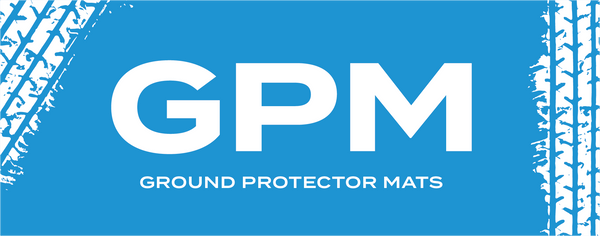Ground Protector Mats Demo Video
Reduce Debris, Dust, & Airborne Particles
Combatting Dust and Airborne Debris on Construction Sites with Ground Protector Mats
Construction sites are dynamic environments where the movement of heavy machinery, the excavation of soil, and the handling of materials are everyday activities. While these are essential to progress, they also bring about a less discussed but significant challenge: the generation of dust and airborne debris. This not only impacts the health and safety of workers but also affects neighboring communities and the environment. Ground Protector mats emerge as an effective solution to mitigate these concerns, offering a means to significantly reduce the dispersion of dust and debris.
The Impact of Dust and Airborne Debris
Before delving into the solution, understanding the extent of the issue is crucial. Dust and airborne particles on construction sites can:
- Impair Worker Health: Prolonged exposure to dust, especially silica from concrete and other building materials, can lead to respiratory issues, including silicosis, asthma, and other chronic lung diseases.
- Reduce Visibility: Dust clouds can obscure vision, increasing the risk of accidents and errors during construction operations.
- Affect Community Well-being: Dust doesn't stay confined to the site. It can spread to surrounding areas, affecting the quality of life of residents and potentially leading to community grievances.
- Environmental Impact: Particulate matter can harm local wildlife and vegetation and contribute to broader air quality issues, impacting regulatory compliance and environmental sustainability goals.
Ground Protector Mats: A Dust Mitigation Strategy
In addressing these challenges, Ground Protector mats serve as a frontline defense. Here's how they contribute to dust and debris control:
Providing Stable Surfaces
One of the primary ways these mats combat dust production is by stabilizing the ground surface. By creating a solid, non-porous layer over the soil, they prevent the churning up of dust by equipment and personnel movement. This is particularly effective in areas with loose topsoil or sand, where the potential for dust generation is high.
Reducing Soil Disturbance
Construction activities such as grading, excavation, and vehicle traffic are significant sources of dust. Ground Protector mats minimize the direct contact between machinery and the earth, thereby reducing soil disturbance and the subsequent release of dust particles into the air.
Supporting Clean Operating Areas
Maintaining clean and organized construction sites is essential for minimizing dust. Ground Protector mats contribute to this cleanliness by providing clear, defined pathways for vehicles and equipment. This organization limits the spread of debris and helps in isolating work zones, further reducing the area of exposed soil and potential dust sources.
Facilitating Watering Efforts
In many cases, controlling dust involves the application of water to keep potential dust particles grounded. However, uncontrolled watering can create muddy conditions that hinder site operations. Ground Protector mats maintain a dry surface above, allowing for effective dust suppression watering without compromising the stability and accessibility of the site.
Specific Applications and Benefits
In the realm of heavy machinery operation, such as during the use of bulldozers for demolition or backhoes for digging, the role of these mats becomes even more pronounced. They act as a barrier, preventing the machinery’s tracks or wheels from directly agitating the ground and kicking up clouds of dust.
For sites located in urban or residential areas, where the management of dust is not just a matter of site safety but also public health, Ground Protector mats offer a means to keep construction activities from becoming a nuisance or health hazard to the nearby population.
Moreover, in arid or drought-prone regions, where water conservation is paramount, the efficiency of Ground Protector mats in reducing the need for frequent water application as a dust control measure cannot be overstated. They present a sustainable option that aligns with environmental conservation efforts while ensuring compliance with increasingly stringent regulations around dust emissions and air quality management on construction sites.
In terms of operational efficiency, the benefits of incorporating Ground Protector mats into site management plans are multifaceted. Beyond dust control, they provide a reliable foundation for heavy equipment, reducing wear and tear and minimizing the risk of machinery becoming bogged down or immobilized by unstable ground conditions. This ensures that projects can proceed on schedule, avoiding delays and the financial costs associated with extended timelines and additional maintenance needs.
By integrating Ground Protector mats into their dust and debris management strategies, construction projects can achieve a balance between operational demands and environmental responsibility. This approach not only safeguards the health and safety of workers and the surrounding community but also contributes to the project's overall sustainability and efficiency.
